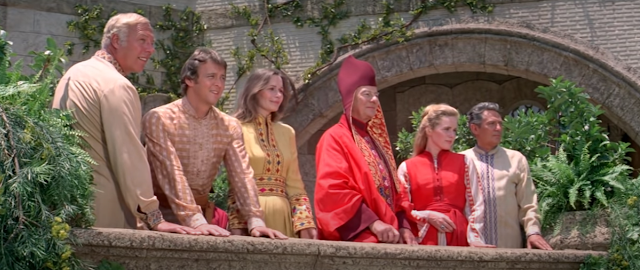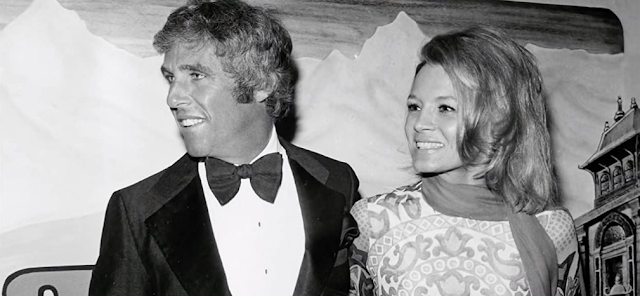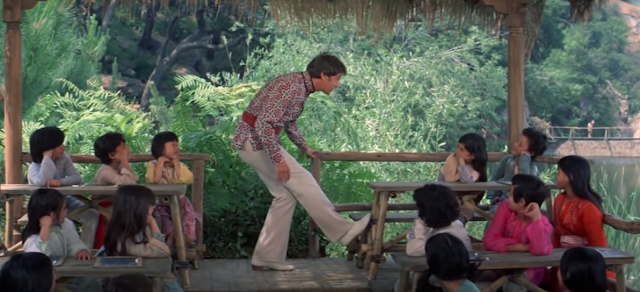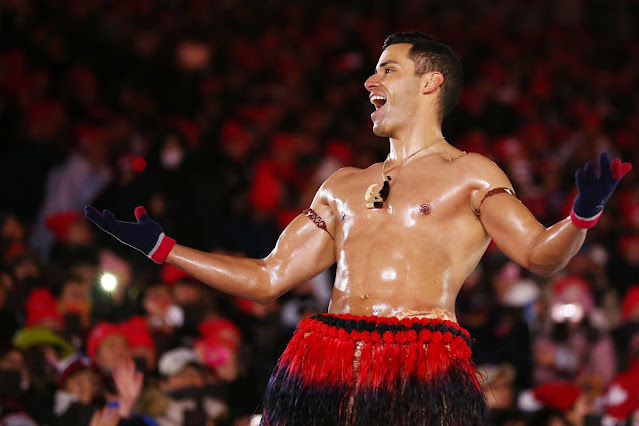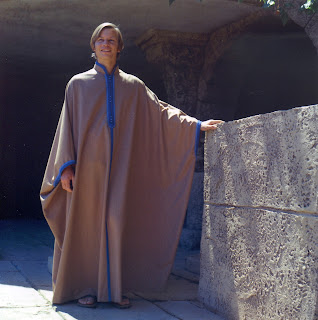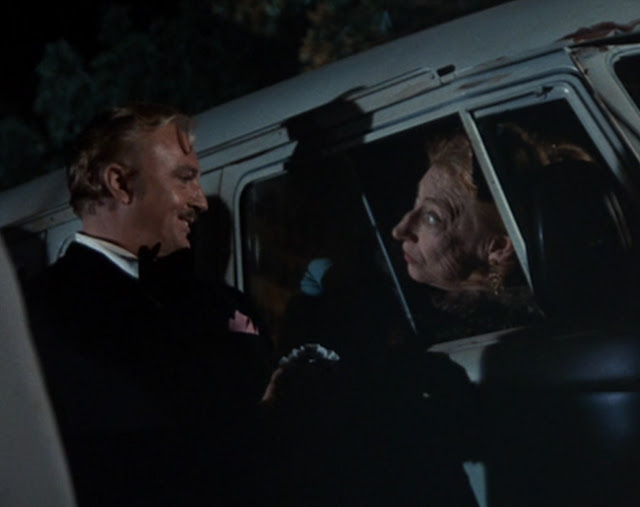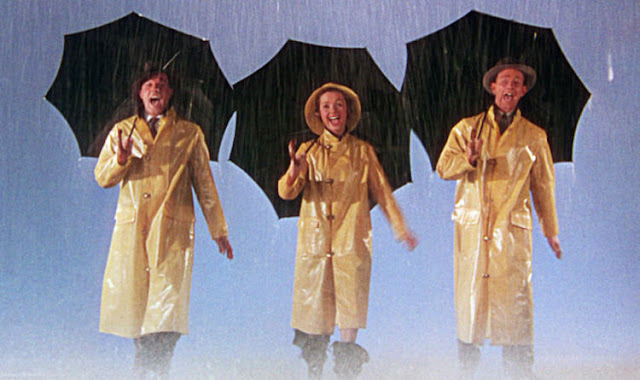 |
| "Singin' in the Rain." Hollywood's greatest musical? |
I've been watching
classic movies since I was about12, over 50 years now. But I never saw Singin' in the Rain until my mid-40s. I
thought the MGM classic was just another cute and corny musical. Mom had told
me to watch, who said it was clever and funny—and she was right!
When you look at the
passé musicals that other studios were putting out in the early ‘50s, Metro’s Singin’ in the Rain is far more
imaginative, funny, smart, vivid, and exuberant, by far.
 |
| Debbie Reynolds became a star upon her 20th birthday with "Singin' in the Rain." |
With Debbie Reynolds,
a star was born in Singin’ in the Rain.
Considering that she was then not a singer or dancer per se, Reynolds worked
very hard to get up to speed. Co-director Stanley Donen had her two solos
dubbed because Debbie sounded too Midwestern—typical MGM, home of the
“mid-Atlantic” accent. You can find one of her solos on YouTube with her own vocals
and she sounds just fine. While Reynolds wasn't a born dancer like those
dervishes Gene Kelly and Donald O' Connor, Debbie keeps up with them in their
group numbers.
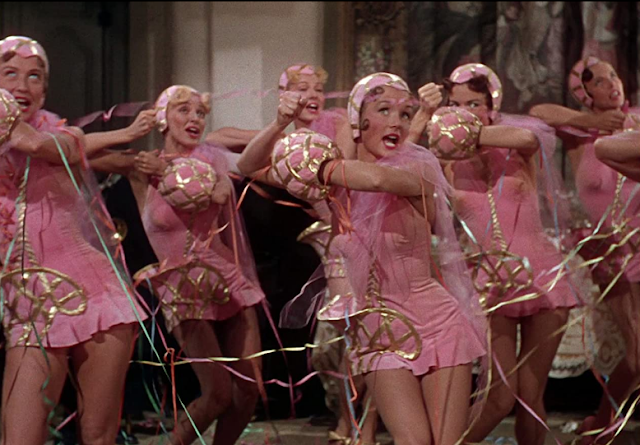 |
| Debbie Reynolds shines as Kathy Selden in 1952's "Singin' in the Rain." |
Debbie Reynolds was just
19 when Singin’ in the Rain filmed and
the release was just days before her 20th birthday. Debbie was obviously working
with superior talent and material in Rain.
In lesser vehicles, Reynolds could come off as saccharine, like Doris Day; here
Debbie is genuinely sweet and girlish. As Kathy Selden, her energy and natural clown
personality are well-utilized. This film officially made her America's
sweetheart, which came in handy during the downtimes of her career. I prefer
Reynolds in her early stardom, when she was a honey blonde sweetie rather than
the later bleached blonde dead set on wowing her audience. Debbie’s the girl
next door and quite endearing. I won't dwell on co-director Gene Kelly's
taskmaster reputation. If Gene had treated prior co-star and neophyte
dancer Frank Sinatra the way he treated Debbie, Frankie probably would have
knocked his teeth out. But Debbie was from a tough working class Texas family,
and she survived.
 |
| Donald O' Connor, Debbie Reynolds, & Gene Kelly are triple threats in "Singin' in the Rain." |
Debbie, Donald O'
Connor, and Gene Kelly were a trio who were triple threats at singing, dancing,
and comedy. “Good Morning” is still an instant high, with its upbeat lyrics and
joyful dancing. Kelly worked hard with them on the musical numbers and Stanley
Donen's sophisticated touch shined on the rest.
 |
| Donald O' Connor's famed acrobatic number, "Make 'Em Laugh," from "Singin' in the Rain." |
Everyone's on their
game here. As Cosmo Brown, Donald O' Connor's impish and energetic, and his
dancing is just as brilliant as Gene's. Donald was also a great clown,
showcased in “Make 'Em Laugh,” though the song is a total rip off of Cole
Porter’s “Be a Clown.” When Donald and Gene sing and dance to the imaginative “Moses
Supposes,” the song is a tongue-twisting delight and their dancing is like
watching an Olympic event. Gene as matinee idol Don Lockwood is pretty
dang perfect. Kelly is at his most handsome and charismatic, and his dancing is
superb. There's a great versatility in his showcased numbers, capped by his
rain dance of the title tune. And I'm supposing that Stanley Donen, one of
Hollywood's smartest directors, helped reign in the three stars tendency to
mug. While they all get to clown, there's very little ham here.
 |
| Aside from his many talents, Gene Kelly is well-cast as a matinee idol in "Singin' in the Rain." |
Singin' in the Rain has that favorite movie myth attached that it
wasn't a huge hit upon release, just a modest hit. Those who tell it usually
compare Rain to Kelly's previous An American in Paris. Well, if you're
talking about Oscars, yes. Paris got
8 Oscar noms and won 6; Rain got 2
noms, and won 0, which I find ridiculous. The only ones nominated were Jean
Hagen for Best Supporting Actress and Lennie Hayton for Best Musical Score.
Again, proof that Oscars are not a part of what ultimately makes movies
memorable. As for the box office, both films cost about the same to produce and
Paris made slightly more money. But which
film is better remembered today? For my money, it's Singin’ in the Rain.
 |
| Cyd Charisse makes a guest appearance for "Singin' in the Rain's" "Broadway Melody." |
One quibble: though
the 13 minute “Broadway Melody” is presented as a "pitch" to the studio
head in the movie, it feels very tacked-on. Superbly done in every respect, it also
has zero to do with Singin' in the
Rain or especially, the movie within a movie, The Dancing Caballero. It’s certainly superior to a similar showstopper,
Judy Garland’s “Born in a Trunk” from ‘54’s A
Star is Born. And Judy’s saga is twice as long! While I’ve read some smart
comments in defense of “Broadway Melody,” it just feels like a Kelly showstopper,
“All About Gene.”
 |
| Gene Kelly was never shy about seeking audiences' adulation. |
I'm also puzzled as to
why Jean Hagen's hilarious Lina Lamont lost to Gloria Grahame that year. Was it
because Hagen's shrill star sounded too much like Judy Holliday in Born Yesterday, for which Hagen was her
understudy on Broadway? To me, Jean’s shtick is much easier to enjoy in small
doses than Judy's shrieking at bellowing Broderick Crawford throughout the
movie version of Born Yesterday. As
for Grahame, she was the “It” bad girl of the early '50s, but her role as a
flirty southern wife in MGM’s The Bad and
the Beautiful was a mere nine minutes... and she even dies off-camera!
 |
| Jean Hagen, right, gives a hilarious performance as silent star Lina Lamont. With an equally funny Kathleen Freeman, as Lina's poor diction coach! |
With a couple of
exceptions, the songs are all from MGM’s early decades, tied to the story of
Hollywood's silent era ending and sound beginning. The satire is snappy, with
some real life nods to casualties of the silent era. Funny bits abound, with a
great cast down to the smallest parts, like hilarious Kathleen Freeman as
Lina’s voice coach. Cyd Charisse is spectacular in the “Broadway Melody”
number. Watch fast for Rita Moreno as starlet Zelda Zanders.
 |
| Perhaps the most famous song and dance number in movie history? Gene Kelly is "Singin' in the Rain!" |
Singin’ in the Rain is such a treat, with memorable song and
dance numbers, gorgeous sets and costumes, great humor and performances. It all
adds up to be MGM’s greatest musical.
Here’s my tribute to
Debbie Reynolds, when she passed away, on her life and very readable memoirs: https://ricksrealreel.blogspot.com/2017/01/debbie-reynolds-double-dose-of-memoirs.html
 |
| Debbie Reynolds was no longer in the movie background after "Singin' in the Rain!" |
FYI: I put all the movie overflow on my public FB movie
page.
Check it out & join! https://www.facebook.com/groups/178488909366865/


